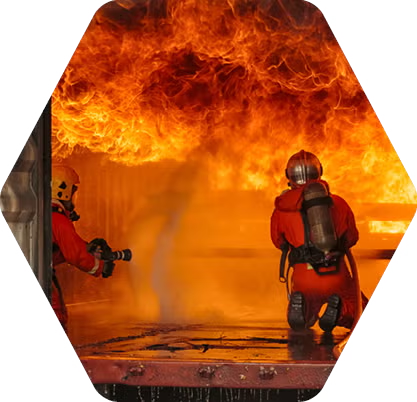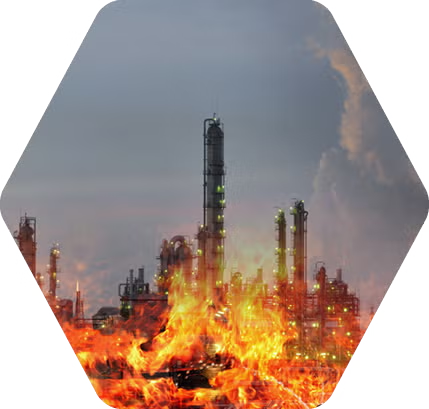✓ Superior vapor suppression, quickly preventing reignition and escalation of liquid fires – helping to increase effective and life-saving rescue and evacuation time.
✓ Oleophobicity (fuel repellency), preventing damaging fuel pick-up (which otherwise could destroy the foam blanket), when foams are inevitably plunged into even shallow pools of flammable liquid fuel, during major emergencies.
✓ Film forming capability providing rapid control of shallow hydrocarbon spill fires, even when applied non-aspirated through water nozzles.
✓ Effective at the widest range of expansion ratios from non-aspirated, through low expansions whether 3-4:1, 8-10:1 up to Medium expansions of around 50-80:1 and beyond.
✓ High stability, extremely low reactivity and non-flammability make C6 foams exceptionally effective for all flammable liquid fuel types and application devices.
✓ This high stability and effective operation across a very wide temperature range provides superior fire performance year-round whether required in high summer or cold winter temperatures, although very cold climates will require freeze protected variants.
✓ Minimal foam usage for a given size fire, ensures containment dikes do not overflow with noxious firewater runoff, before rapid control and extinction are achieved, minimizing adverse environmental impacts.
✓ Fast control, fuel shedding and vapor suppression provide greater protection for front-line firefighters and emergency responders in specific scenarios which avoids undesirable complications and unintended consequences of alternative foams.
✓ First responder benefit from greater fire capabilities delivered from smaller concentrate volumes, making responding fire trucks more effective, while also C6 foams minimizing capital costs, and equipment expenditures for Fire Departments, industrial companies and public entities like cities, airports and ports.
✓ Proven effectiveness on large incidents with versatile handling under many variable conditions within established safety factors for firefighting foam applications.
✓ Compatibility with other AFFFs and AR-AFFFs allowing mutual aid and sharing resource without serious complications.
✓ Well established training and standard operating procedures by firefighters ensures fire fighter capabilities and safety are maximized.

